Advanced Ancient Technology – Talos A Greek Robot Created By The God Of The Forge
A. Sutherland – MessageToEagle.com – Many of us are familiar with the figure of Talos through his famous depiction as a bronze giant, which made his presentation in the 1963 movie “Jason and the Argonauts”.
But where did the concept for Talos come from? Could Talos have been the first robot in history?
Most famous prehistoric robot produced in Greece is Talos, a gigantic mechanical device, used mainly to guard Crete, but Talos was certainly not the only robot frequently used in the ancient world.
Examination of ancient records reveals a large number of examples proving the existence of ancient androids and computers. The Know-How of ancient robotics and computer technology was recorded, preserved and kept hidden from the public.
Talos was the first ancient Greek robot. This fully operational machine was constructed by one of the 12 Olympian Gods, Hephaestus, a mechanical engineer known as God of the Forge, a god of metallurgy, the craftsman god or the divine smith who governs metallurgy.
In his metal workshop Hephaestus, an inventor of diverse automated devices made many metal masterpieces and developed techniques comparable to our modern technological achievements.
Among his many achievements are for example Zeus’ thunderbolts, Achilles’ shield described in the “Iliad” written by Homer and a “magical” helmet, so-called Hades’ cap of invisibility!
Hades owned a magical helmet, which made it possible for its wearer to become invisible.
This practical device enabled a person to hide from enemy.
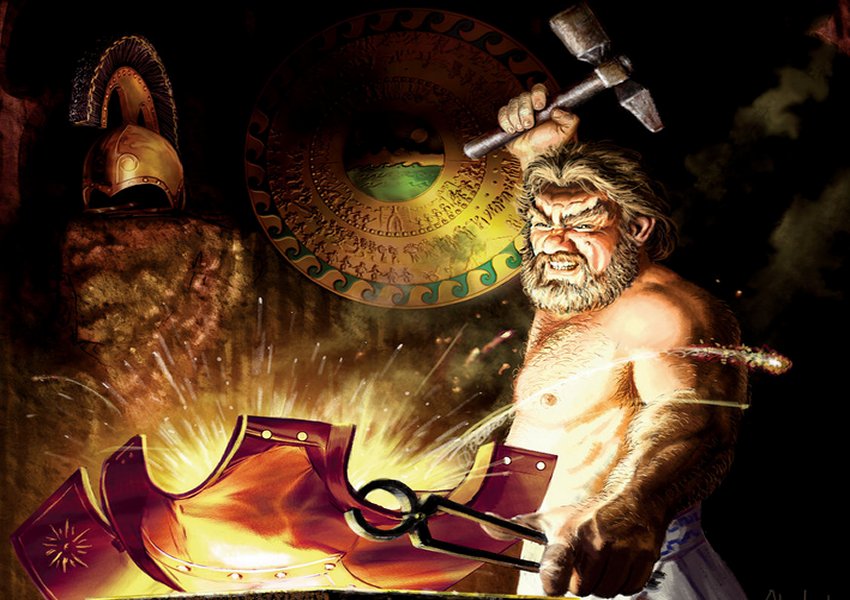
A mechanical man, Talos, which was often depicted on ancient Greek silver coins, was a gift to Minos, King of Crete. A number of such coins were excavated in Phaistos (Phaestus) located in the south-central part of Crete, approximately 3 1/2 miles.
As we remember, also in Phaistos, there was discovered a mysterious clay disk known as the Phaistos Disk.
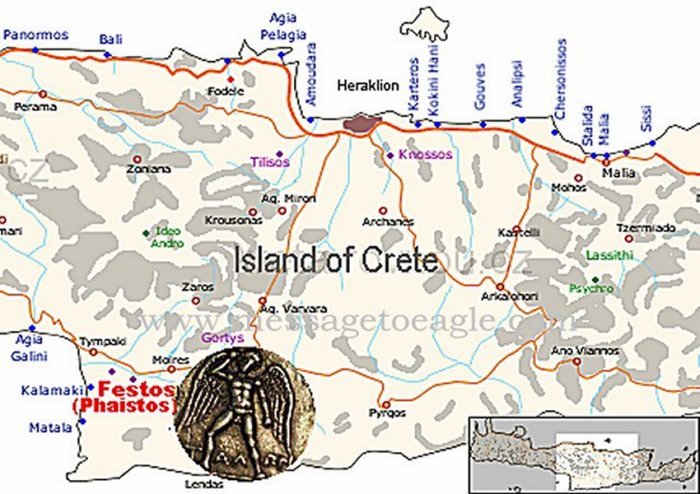
Talos, a huge guardian of the island of Crete, was constructed of copper. It patrolled the Crete’s coast three times daily and protecting the island from enemies.
The robot, capable to throw large rocks on diverse enemies and their boats, could move very quickly. He had medium speed of 155 miles per hour! (250 km/h). Talos’ boiling hot breath could easily burn all hostile ships approaching the coast of the Crete!
His job was to prevent an enemy invasion.
According to Apollodorus, a Greek writer, the robot Talos (in the ancient Cretan dialect its name means “sun”) was given by Zeus to Europa, Queen of Crete, on her wedding to Minos, King of Crete. The robot had one blood vessel that extended from his neck down to his ankles, where it was kept in place by a bronze bolt…” (Apollodorus 1.140)
In Popular Electronics, 1958, we read:
“Talos, a bronze “man” made by the god Hephaestus as a gift from Minos, King of Crete. The job of Talos was to run three times around the island of Crete in the course of a day, throwing huge rocks at any invaders from the sea—a Weapons Alert System and Guided Missile in one package! Talos had a single “vein” running from his neck to his ankle, stoppered somewhere in his foot by a large bronze pin… In modern terms, that single vein could have been his main power cable and the pin his fuse…”
According to Argonautica 4.1638, a Greek epic poem written by Apollonius Rhodius in the 3rd century BC., the robot Talos was destroyed while “picking up a big stone, he grazed his ankle on a sharp rock, “ichor ran from him like molten lead”, he stood for a second, “high on the jutting cliff” and then “came down with a resounding crash…”
One ancient version of the story describing the robot Talos’ fate says that the giant bronze “man” was “wounded” in his heel and a screw came off… The blood of Gods streamed from the metal body! (“the blood pumped out of his vein as melted metal)
Written by – A. Sutherland – MessageToEagle.com Senior Staff Writer
Copyright © MessageToeagle.com All rights reserved. This material may not be published, broadcast, rewritten or redistributed in whole or part without the express written permission of MessageToeagle.com
Related Posts
-
 Map May Confirm The Legend Of The Mysterious Lost Sunken Welsh Kingdom Of Cantre’r Gwaelod In The Black Book Of Carmarthen
No Comments | Aug 23, 2022
Map May Confirm The Legend Of The Mysterious Lost Sunken Welsh Kingdom Of Cantre’r Gwaelod In The Black Book Of Carmarthen
No Comments | Aug 23, 2022 -
 America’s Mysterious Pedro Mountain Mummy And The Hidden Race Of Little People
No Comments | Jul 3, 2014
America’s Mysterious Pedro Mountain Mummy And The Hidden Race Of Little People
No Comments | Jul 3, 2014 -
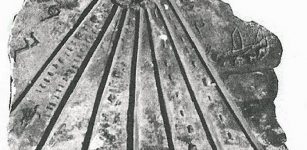 Controversial Davenport And Pontotoc Stele Reveal Ancient Egyptians And Black Africans Visited North America
No Comments | Jun 27, 2014
Controversial Davenport And Pontotoc Stele Reveal Ancient Egyptians And Black Africans Visited North America
No Comments | Jun 27, 2014 -
 Sōhei And Yamabushi: Fearsome Ancient Warrior Monks Of Japan
No Comments | May 30, 2016
Sōhei And Yamabushi: Fearsome Ancient Warrior Monks Of Japan
No Comments | May 30, 2016 -
 Extraordinary Photographic Memory Of Genius Stephen Wiltshire
No Comments | Jan 28, 2016
Extraordinary Photographic Memory Of Genius Stephen Wiltshire
No Comments | Jan 28, 2016 -
 Why Was Pharaoh Hatshepsut’s Reign Virtually Erased From History?
No Comments | Nov 9, 2014
Why Was Pharaoh Hatshepsut’s Reign Virtually Erased From History?
No Comments | Nov 9, 2014 -
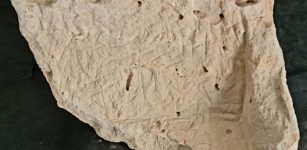 3,500-Year-Old Stone Inscribed With A Curse Against The City’s Governor Discovered In Jerusalem
No Comments | Jul 16, 2022
3,500-Year-Old Stone Inscribed With A Curse Against The City’s Governor Discovered In Jerusalem
No Comments | Jul 16, 2022 -
 The Oldest Denisovan Fossils Ever Discovered Shed New Light On Early Hominins As They Spread Across Eurasia
No Comments | Dec 1, 2021
The Oldest Denisovan Fossils Ever Discovered Shed New Light On Early Hominins As They Spread Across Eurasia
No Comments | Dec 1, 2021 -
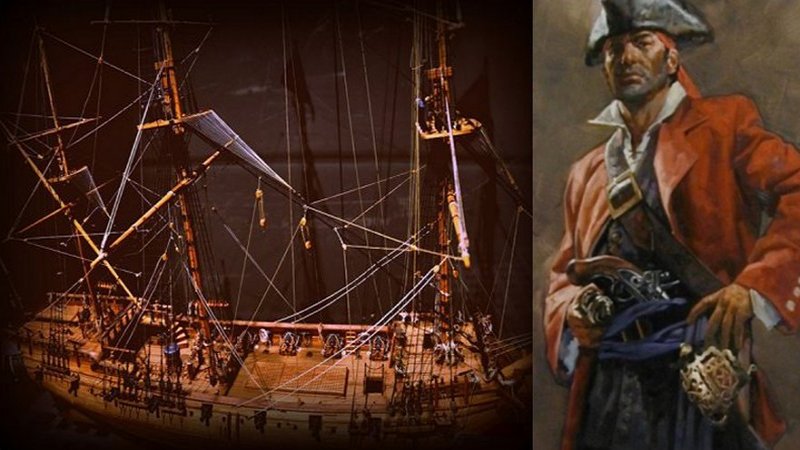 Has The Body Of Legendary Pirate Black Sam Finally Been Discovered Off The Coast Of Massachusetts?
No Comments | Feb 17, 2021
Has The Body Of Legendary Pirate Black Sam Finally Been Discovered Off The Coast Of Massachusetts?
No Comments | Feb 17, 2021 -
 Why Are The 2,000-Year-Old Roman Walls Found In Switzerland An ‘Archaeological Sensation’?
No Comments | Sep 15, 2023
Why Are The 2,000-Year-Old Roman Walls Found In Switzerland An ‘Archaeological Sensation’?
No Comments | Sep 15, 2023

